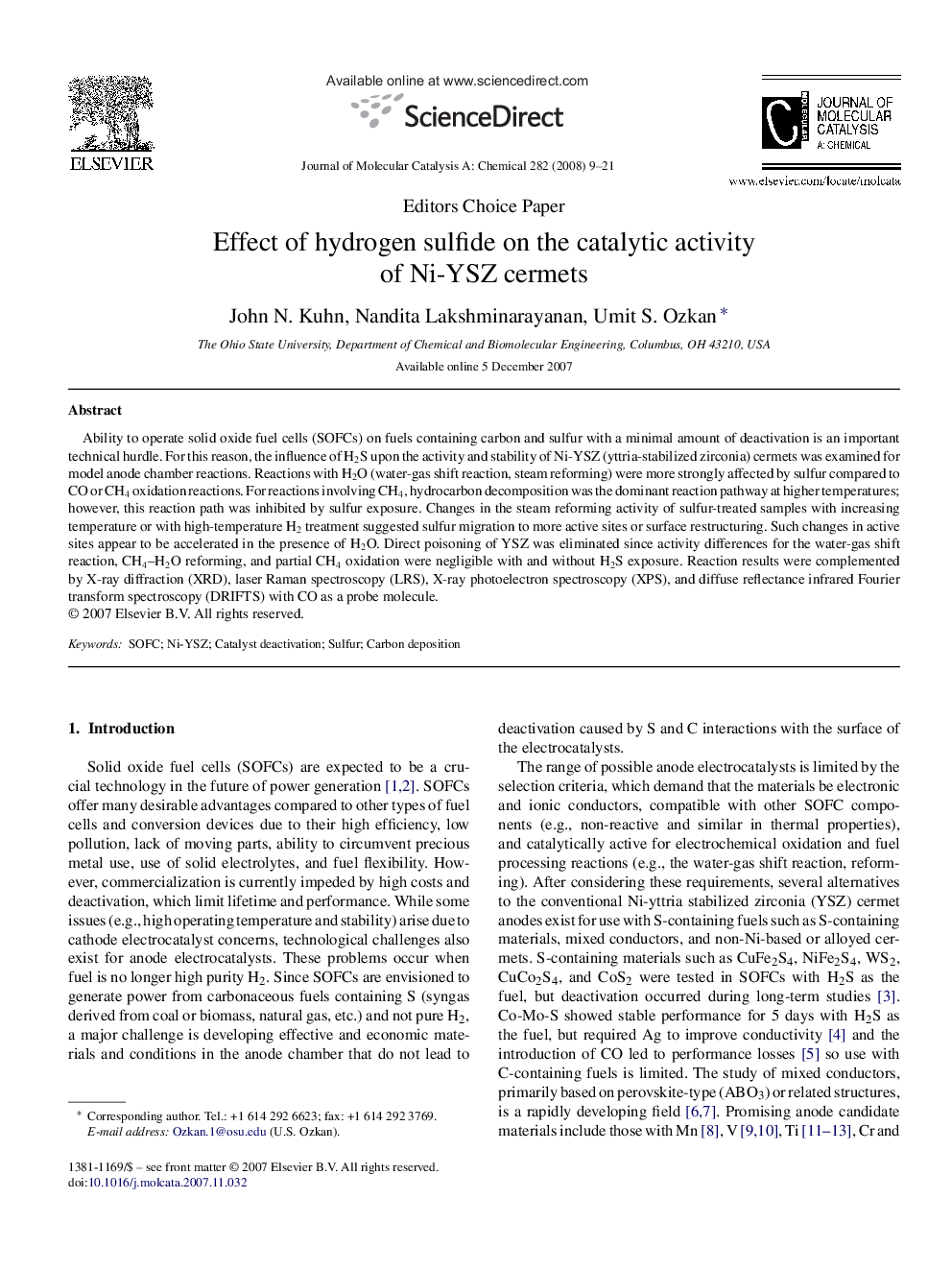| Article ID | Journal | Published Year | Pages | File Type |
|---|---|---|---|---|
| 67288 | Journal of Molecular Catalysis A: Chemical | 2008 | 13 Pages |
Ability to operate solid oxide fuel cells (SOFCs) on fuels containing carbon and sulfur with a minimal amount of deactivation is an important technical hurdle. For this reason, the influence of H2S upon the activity and stability of Ni-YSZ (yttria-stabilized zirconia) cermets was examined for model anode chamber reactions. Reactions with H2O (water-gas shift reaction, steam reforming) were more strongly affected by sulfur compared to CO or CH4 oxidation reactions. For reactions involving CH4, hydrocarbon decomposition was the dominant reaction pathway at higher temperatures; however, this reaction path was inhibited by sulfur exposure. Changes in the steam reforming activity of sulfur-treated samples with increasing temperature or with high-temperature H2 treatment suggested sulfur migration to more active sites or surface restructuring. Such changes in active sites appear to be accelerated in the presence of H2O. Direct poisoning of YSZ was eliminated since activity differences for the water-gas shift reaction, CH4–H2O reforming, and partial CH4 oxidation were negligible with and without H2S exposure. Reaction results were complemented by X-ray diffraction (XRD), laser Raman spectroscopy (LRS), X-ray photoelectron spectroscopy (XPS), and diffuse reflectance infrared Fourier transform spectroscopy (DRIFTS) with CO as a probe molecule.
Graphical abstractThe effect of H2S upon the activity and stability of Ni-YSZ (yttria-stabilized zirconia) cermets was examined for model anode chamber reactions. Reactions with H2O (water-gas shift reaction, steam reforming) were more strongly affected by sulfur compared to CO or CH4 oxidation reactions. For reactions involving CH4, hydrocarbon decomposition was the dominant reaction pathway at higher temperatures; however, this reaction path was inhibited by sulfur exposure.Figure optionsDownload full-size imageDownload as PowerPoint slide
